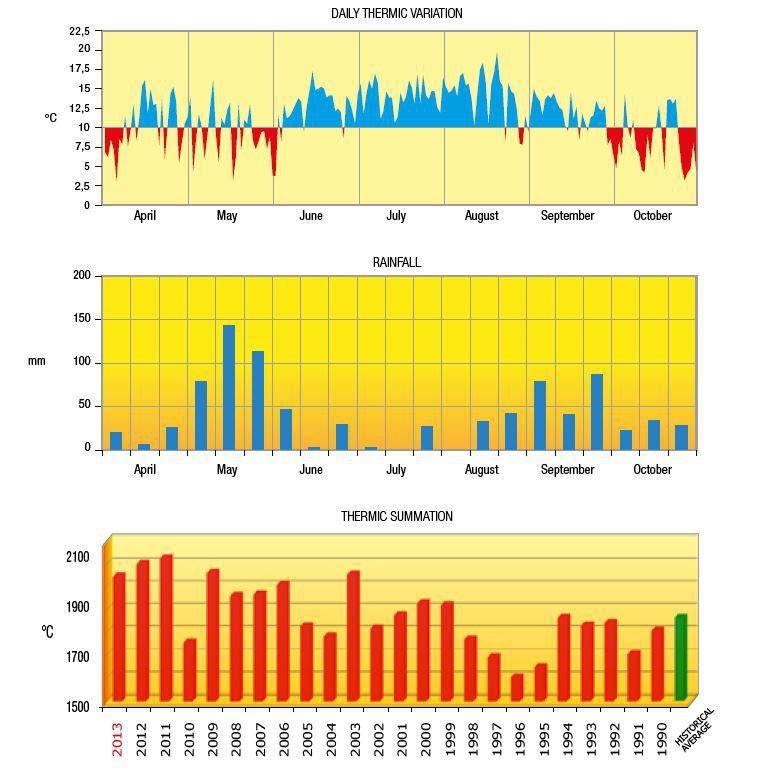VINTAGES
VINTAGE 2013
2013 GROWING YEAR
2013 was a growing year in various ways quite similar to the previous two years, 2012 and 2011.
The mutually-shared characteristic is summer weather, in which our Mediterranean climate brought warm, fairly dry weather for the grape-ripening period.
With respect to the season in detail, it began with a cold, rainy winter, conditions that lasted until the start of spring, resulting in a delay of about 8 days for vine budswell. A mild, dry April encouraged budbreak, which began on weather took a turn for the worse, with low temperatures under these less-than-favourable conditions, and continued suffered the worst, displaying shatter and consequently diminished fruit set. This period, too, presented the most challenges with regard to controlling fungal attacks, particularly peronospora (downy mildew), which proved very stubborn, both on leaves and clusters. July finally arrived, with warm, dry conditions, and consequently significant evapotranspiration caused water stress in the vines, beginning in mid-month. This made necessary several careful applications of emergency irrigation, particularly in shallow clay soils. It is commonly-accepted today, contrary to convictions in the past, that it is beneficial to utilise subsurface micro-emitters to supply very limited amounts of water, thus restoring to the soil the water it loses, without inducing any undesirable vigour in the vines. Veraison began 24 July in the early-ripening varieties, slightly later than the historical norm, due to that unfavourable weather early in the year. August continued under fine weather and only moderate dryness, conditions that stopped and reversed the fungal attacks experienced in June, thus inducing in the vine an excellent physiological ability for accumulating photosynthetic compounds in the clusters.
In late August, as frequently occurs here, temperatures began to decline, in particular night-time lows, thus creating wide day-night temperature differentials, which are crucial for developing aromatic complexity and for preserving good levels of acidity in the grapes. We thus obtained fully ripe grapes, healthy and sound, without having experienced any severe vineyard management problems, to the relief of the winery vineyard crew. Harvest stated on 6 September, with Sauvignon Blanc, and continued to 4 October for the white grapes, while Merlot closed the harvest, on 18 October.
From te point of view of the wines, there is nothing unusual to report, considering the healthy state of the fruit and the good balance of components in the berries. 2013 was without a doubt a growing season easy to manage, and it didn’t bring us any of the higher alcohols that in some years we see in the cru vineyards. We can expect, then, wines that display the fruit and floral notes classic to our growing area, and crisp, tangy palates. This, brief, all-too-concise sensory description of the wines will obviously be further enlarged, with much more details, once the wines have more fully evolved.

